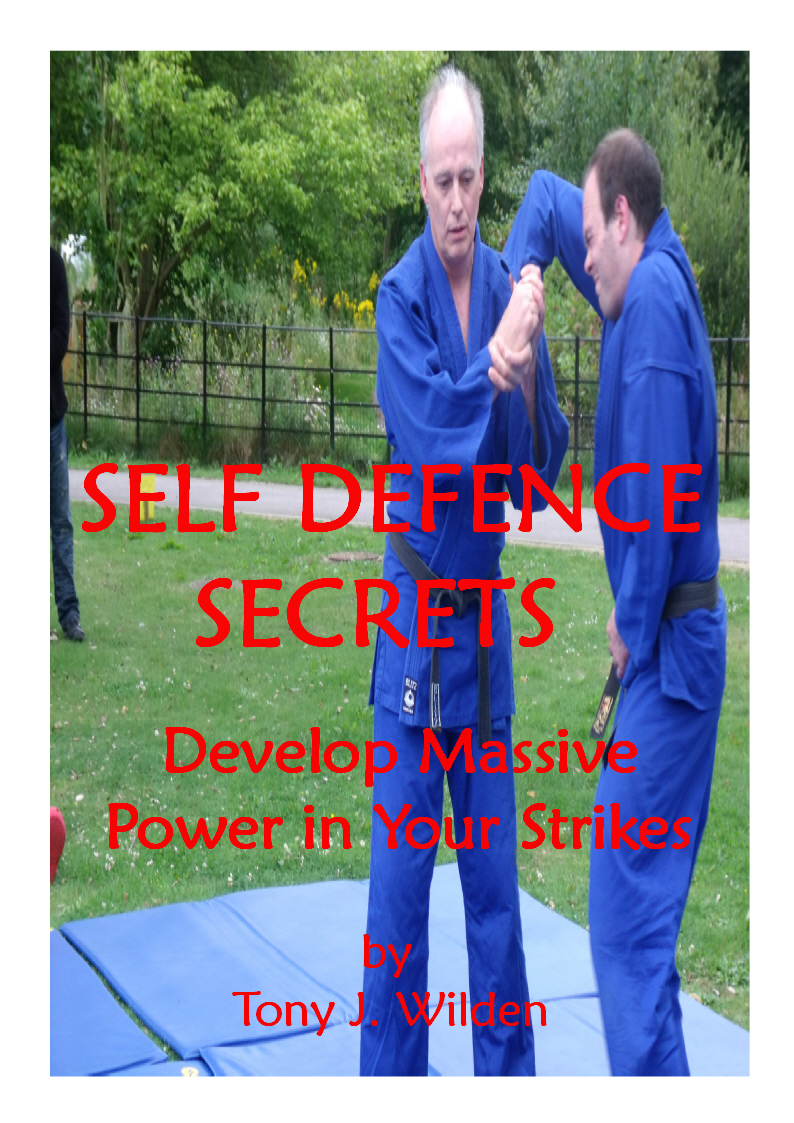Learn How to Avoid Aikido Injuries. Prevention is
Far Better than Cure!
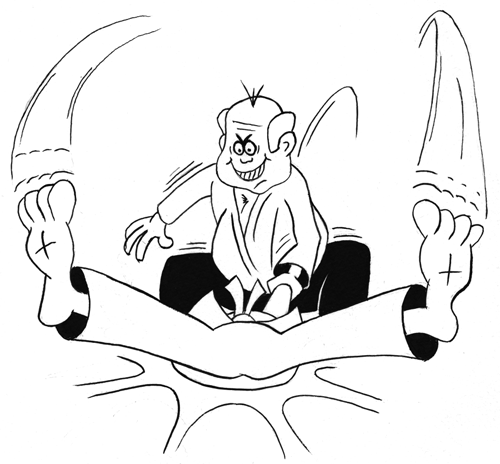
Aikido injuries stop your training progress.
Taking part in any activity increases the risk of sustaining an injury. However a large percentage of injuries can be prevented by learning how they occur. Obvious causes are accident or over-training.
If You wish to avoid and reduce the possibility of an aikido injury, then it is essential to approach your training in a more holistic manner.
If You are healthy mentally, physically and emotionally then extreme repetitive training will reap benefits with minimum risk of pain and...
annoying set-backs!
A good Warm-Up increases the body temperature, making tissue more flexible and less prone to injury by tearing. It also raises the heart rate so fuel and oxygen can be delivered more effectively to the muscles.
Correct Stretching requires attention to form and each stretch can be held for up to 30 seconds to get the optimum benefits. Before and after Your aikido training, stretch gently, breathe deeply while focusing on relaxing the muscles.
A good Cool-Down will gradually reduce the intensity of the activity so that waste products can be removed more effectively. Deep breathing, relaxation and stretching will help in the reduction of muscle soreness.
The Aikido First Aid Kit shows you, in step-by-step details, exactly how to prevent and treat aikido injuries. You can get it as a FREE bonus with the unique Aikido Success Blueprint collection. Plus key action steps for fast results!
Common
Aikido Injuries
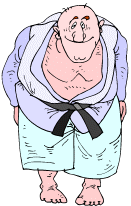
Wrist - pins, nikajo, sankajo, kotegaeshi, shihonage.
Elbow - ikkajo pins, shihonage, juji-garami, hiji-ate, hiji-jime.
Shoulder - shihonage, nikajo & sankajo pins, incorrect falls.
Head and neck - shihonage, incorrect falls.
Back - the so-called 'high' falls from shihonage & koshinage.
Toes and fingers - caught on training gi's, hakamas, mats etc.
Knee injuries - improper loading of partner in koshinage, poor foot position while executing techniques, failure to twist hips thereby releasing strain on knee joints, outside lateral impacts; (surface) excessive practice of seated techniques.
This list is not complete and doesn't include cuts and bruises which are usually not of much consequence although they can be annoying.
The above reveals that it is often the basic techniques that are implicated, and it is due to the frequency with which we practice them.
Related to aikido injuries is that in almost any aspect of life, males and females, typically go through a 'sizing up ritual' when confronting one another where there is somehow an understanding of the superiority of one over the other.
The most obvious factor at play in determining dominancy is...
sheer physical size!
In aikido, this 'sizing up exercise' is usually accomplished after a few throws have been executed (often with a little bit of resistance). The pecking order having been established, training then continues.
In practice we alternate between being the potential 'inflictors' of pain or injury and the potential 'victims' of pain or injury. There should be a level of trust, an unspoken contract between practice partners.
This is especially the case since there is often a great difference between the technical and physical abilities of two partners training together.
Given the reality of everyday practice where one of the training partners is dominant having demonstrated physical and/or technical superiority, and the fact that human beings are 'naturally competitive', we have a scenario where...
aikido injuries can and will occur.
Naturally, where some individuals are involved, the incidence of injury occurs with greater frequency. It seems that most dojos have at least one resident 'bully', usually male, and either a senior student or teacher.
He or she enjoys a deep respect from fellow members - a respect based primarily on fear. One would not even think of resisting his technique for to do so would result in an instant and devastating reprisal.
My Aikido First Aid Kit shows you, in step-by-step detail, exactly how to prevent and treat your aikido injuries. You can get it as a FREE bonus with the unique Aikido Success Blueprint - Plus Key Action Steps for Fast Results!
Constant Alertness is
Needed to Avoid Dojo Injuries
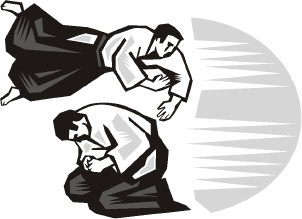
Otherwise intelligent people will abandon their normal attitude of alertness when immersed in the warmth of the 'family atmosphere' of an aikido dojo. It is not uncommon to see classes conducted under crowded conditions where...
aikido injuries can easily happen!
A few words from the teacher in charge to be careful is not enough and it requires a systematic approach to ensure a safe training environment...
Students tend to throw freely into any open space.
Aikido training focuses our natural physical strength and ability, and students will tend to engage in more intensive training as they advance in level. So it is essential that they exercise greater caution as skills improve.
At large seminars it is virtually impossible to train with peace of mind because far too many people are crammed into a limited mat space. The 'self-defense' that we learn is the art of how to avoid colliding with one's fellow trainees.
Most of us have trained under crowded conditions, which is the sign of a successful dojo. We have to realize that the potential for aikido injuries are present, especially under these circumstances.
Your Instructor must take the lead in creating a safe training environment and have training partners throw parallel to each other... to the outside of the mat.
This is the key to avoiding collision injuries!
During weapons practice, training pairs line up all in the same direction along the length of the mat. The need for this approach in weapons training is obvious because everyone recognizes the danger of being struck by a weapon.
It should be equally obvious that the collision of two bodies during unarmed practice can cause serious aikido injuries.
The Aikido First Aid Kit shows you, step-by-step, exactly how to prevent and treat aikido injuries. You can get this revealing ebook as a FREE bonus with the unique Aikido Success Blueprint collection. Plus key action steps for fast results!
What is the Remedy
for Aikido Injuries?
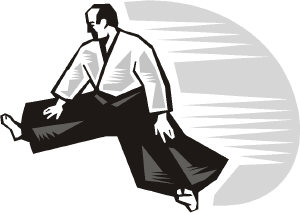
Acute Injuries are generally short-term, with symptoms that are sudden or sharp, the result of trauma. It is often seen in aikido from a fall or collision. These seem to be serious but the tissue cells fully repair in a few days or weeks.
Acute strain can be caused by massive effort and over-exertion beyond our capabilities. It is in those moments of poor co-ordination that injury tends to occur, with muscles working against each other, or excessive force at the joints.
Chronic Injuries persistant symptoms over a longer period of time, developing progressively over years and caused by prolonged incorrect activity, structural problems, incorrect training methods, poor equipment or problem techniques.
The damage is often not noticed until it announces itself via pain or restricted movement. Poor technique is a common source of injury that concentrates stress onto specific areas of the body leading to overload.
If you have been injured recently, in the first 24 hours after an expert health assessment use the...
R.I.C.E method and avoid the H.A.R.M. factor in the first 48 hours...
It is all discussed in my Aikido First Aid Kit, step-by-step, how to prevent and treat injury. It comes as a FREE Bonus with my Aikido Success Blueprint
Want local training in Bognor Regis UK? Visit... Arun Aikido Club
Has this page been useful to YOU? It may benefit other people too! Please go ahead and pass it on - Share via the Link Bar below - many thanks!
Sick of the Elite Control System? Unplug from the Matrix Now!





